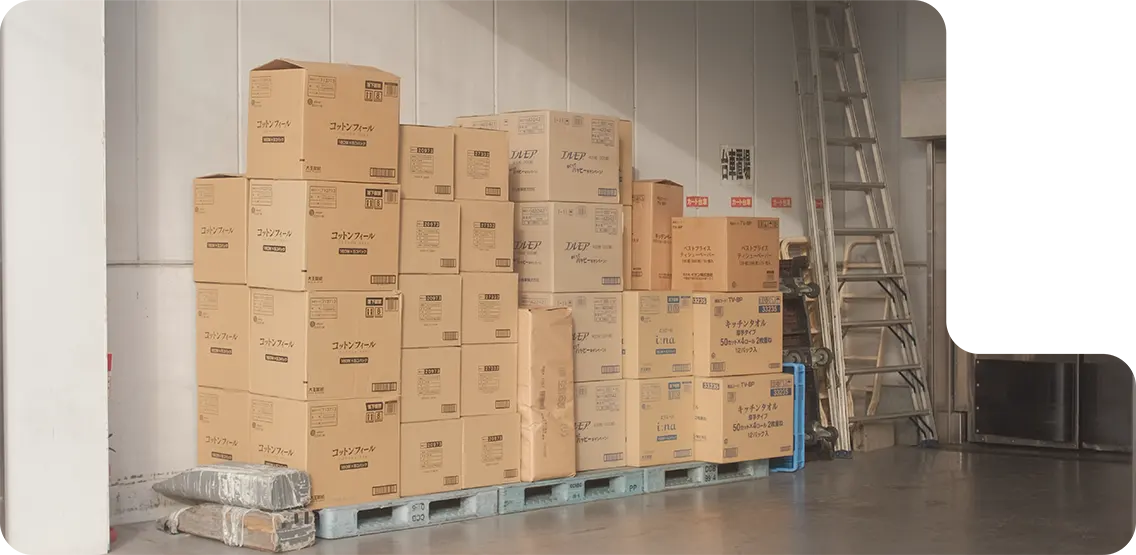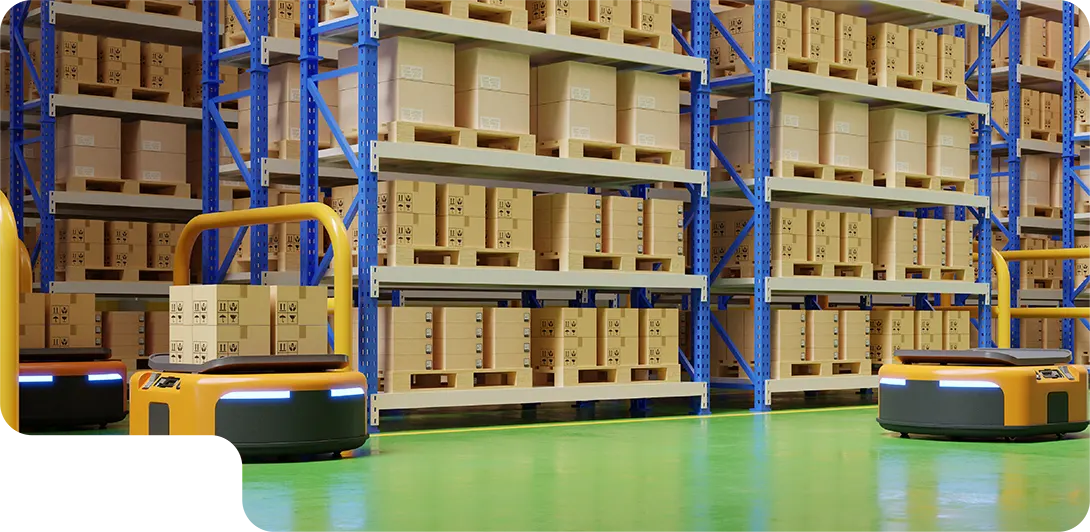Table of Contents
More Inventory Content
Get the latest e-commerce industry news, best practices, and product updates!
Table of Contents
More Inventory Content
Share This
Get the latest e-commerce industry news, best practices, and product updates!
Table of Contents
Share This
More Inventory Content
Get the latest e-commerce industry news, best practices, and product updates!
Buffer inventory is the surplus inventory of either raw materials or finished goods that a corporation keeps on hand as a precaution against unforeseen events. In layman’s terms, surplus inventory is what a corporation puts in reserve to safeguard itself.
A business keeps buffer inventory in shipment or on standby if there is an interruption in production, supply, or lead time.

Example:
Let’s take an example of a jam manufacturer and supplier.
The manufacturer stockpiles extra raw ingredients such as fruits and sugar to account for supplier delays, which will be their reserve. This will assure that companies can maintain manufacturing even if stock runs out unexpectedly.
The manufacturers also keep extra jars of jam, sealed and ready for sale as the company’s reserve stock. It assures that businesses can continue to convert sales in the case of unexpected demand rise.

Buffer Inventory Vs. Safety Stock
Both buffer inventory as well as safety stock serve as a reference to each other and, therefore, are considered similar. Still, the purpose of both buffer inventory and safety stock makes them different.
The number of raw materials required to protect from a sudden change or surge in client-induced demand is referred to as buffer stock. It’s similar to having a safety stock and is also known as buffer safety inventory.
For example, a merchant kept extra wheat stock for at least seven years. This allowed him to sell wheat during a famine that broke out at that time. The additional storage of wheat stock is his buffer inventory.
Whereas safety stock inventory is surplus goods stored in case of unforeseen delay caused by the supplier. Due to this, the safety stock is always kept in warehouses.
For example, a firm’s researchers work on finding the market demand and calculating the demand for an umbrella in the market, roughly 2,000 units per month. Since the demand is never steady, they decide to keep extra 100 units on hand as a precaution.

Why You Need to Keep Buffer Inventory
Buffer stock can be discovered at any phase of the supply chain and is meant to lessen the frequency or intensity of lower inventory incidents, leading to increased customer support. Buffer stock is used in manufacturing or other inventory circumstances to ensure that unusual or unforeseen shortages or demands are met with assurance. Product is typically retained whenever there is uncertainty about the product’s demand or lead time.
The volume of buffer stock a company decides to keep on hand regularly can significantly impact its operations. Excess inventory might result in increased maintenance expenses. A surge in inventory can repeatedly occur if there is insufficient stock. As a result, enterprises must establish a careful balance and consider an amount of buffer inventory to keep on hand.
Below are some of the most important aspects of a buffer inventory:
Prediction with precision
It is essential to understand the buffer stock. Predicting demand and supply can help to determine the quantities required for backup.
Amount of refills
The patterns and previous restocking can benefit while replenishing the stock. The set frequency of restocking, such as once a month, can assist a business in better planning.
Time of completion
The time of completion is the time a company takes to create a certain amount of stock. Planning buffer stock must synchronize with the preparation time, or else stocking will be delayed or early than intended.
Life span of the product
The life span or freshness of the commodities is a critical factor in buffer stock planning. If the products involved in manufacturing are susceptible to the early expiration date, then the manufacturer will not be able to store inventory for a long time.
Climatic changes
Differences in climate must also be considered when holding buffer stock. It is not necessary that product demand will remain similar throughout the year but will vary depending on the need of the consumers.
Example:
A pizza restaurant requires the following ingredients to manufacture a pizza such as flour, cheese, tomatoes, and onions. Now let’s go back to the aspects we discussed and incorporate them into this example. Pizza demand will fluctuate over a year or month. It will be higher on a weekend or holiday compared to regular weekdays. As a result, the restaurant owner will have to keep a buffer supply on hand to meet the pizza demand during weekends or holidays.
Since the ingredients listed above are perishable, they cannot be stocked in more significant quantities and can be utilized before getting spoilt. It is also possible that tomatoes and onions are in short supply, and demand for pizza is also low.
The restaurant owner would examine both of these before stockpiling buffer supplies. Also, the owner must consider previous trends and replenishment frequency to store the ingredients and keep the business running properly.

Greasley's Method
Greasley, a UK-based operations management professor, gave one of the formulas for calculating buffer inventory. His approach to calculating surplus inventory considers the standard deviation of completion time, expected service factor, and average demand.
Here is the formula:
𝜎LTx average demand x Z
The standard deviation in development cycles or time of completion is the unpredictability or instability, whereas average demand denotes the quantity of goods required to meet consumer demand in a specific period.
This strategy is typically utilized when demand and time of completion fluctuate considerably. It does not, however, consider the amounts of products still in process but not yet prepared to be sold.

Historical Demand-based Buffer Inventory
The method of calculating a buffer inventory matters less; having access to past orders and inventory data matters more. Inventory predicting necessitates significant planning to ensure that your company is equipped to constantly satisfy demand while also being mindful of not ordering large amounts, which can raise the expenses of maintaining extra inventory and eventually eat into earnings.
A business can easily incorporate all supply chain data from numerous channels into demand forecasting techniques to determine actual product demand and insight into projected sales.
Viewing stock turnover, stock keeping unit performance by location and sales channel, and other data can help businesses estimate growth and projecting trends on a micro level, so you idenitfy precisely how buffer inventory is a better choice based on historical supply chain trends.

Advantages of Buffer Inventory
Here are the advantages of having a buffer inventory:
- Buffer stock ensures stability in rates, allowing farmers to maintain their revenue. A sharp price reduction can force farmers to leave the business, resulting in unemployment.
- Low inflation promotes increased investment in agriculture.
- Agriculture can have beneficial effects, such as assisting remote towns, whereas a price drop is detrimental in rural areas.
- Buffer stocks help target a price, helping customers avoid overpriced items and limit food inflation. This may be relevant for low-income households who struggle to pay exorbitant prices for the same products during low supply.
- Buffer inventory helps preserve the food supply and avoid shortages.
- The buffer inventory strategy makes it feasible for governments or businesses to profit by purchasing products during a surplus and selling them during scarcity.
Disadvantages of Buffer Inventory
With advantages come certain exceptions, helping us gauge the effectiveness of a method in the long run.
Here are some of the burdens of a buffer inventory:
- Purchasing extra supplies might grow rather costly for the government or a business as it will necessitate additional taxes.
- Price limits and buffer stocks may encourage overstock since farmers know that any surplus would be purchased. It may even motivate farmers to overuse pesticides to maximize harvests because they know any extra supply can be sold even if the market doesn’t want it.
- Farmers can become inefficient due to increased government subsidies on buffer inventory. This may lead to a low desire of farmers or producers to cut expenses and react to market demands.
- Some businesses manufacture goods using perishable items which cannot be stored for an extended period, because of which the manufacturer won’t be able to adapt according to the fluctuations in demand.
- If a country organizes a buffer stock program and purchases extra supply, other countries may re-ride on their attempts to maintain higher prices to beat other nations.

What Is a Good Buffer Stock Level?
Safety stock is inventory that retailers buy and retain to prevent out-of-stock situations. Retailers are highly motivated to avoid losing sales due to a lack of stocks, but estimating how much inventory will be sufficient to alleviate supply and demand uncertainty is difficult.
Safety stock requirements vary depending on the merchant, the business, and the service level standards. As a result, determining a proper safety stock level is generally done by analyzing sales demand and the time taken for the product’s completion.

Methods to Calculate Buffer Inventory
Here are the following methods to calculate the buffer inventory:
Fixed safety stock
In this method, companies enlist the help of production planners. The planners do not use formulas. Instead, they determine buffer stock depending on the maximum daily utilization over a period. Until the planner revises it, the quantity of buffer stock remains constant.
Time-based calculation
Buffer stock is calculated using future expectations. Typically, businesses determine this stock by using this process for a set period. This method uses statistical approaches to account for both actual and predicted demand. One drawback of utilizing such a technique is that it does not consider business uncertainty.
Formula-based
Many analysts utilize a standard technique to calculate buffer inventory based on the assumption that a business will require it in the event of a stockout. This model, however, does not account for seasonal variations in demand.
Formula: (max. daily usage * max. lead time) less (avg. daily usage * avg. lead time)
The maximum daily utilization is the number of units a company consumes or sells in a day. In contrast the maximum time taken in completion is the time a supplier takes to deliver. Similarly, average daily consumption is the average of a company’s maximum and minimum units used or sold. The average completion time is the sum of the maximum and minimum time required by the supplier to deliver goods or raw materials.

Example of Buffer Inventory
Here is a list of examples of buffer inventory based on real-time instances:
Example 1:
Ever Normal Granary
The concept of Buffer inventory was founded in China in the first century BC. The goal was to stabilize supply by purchasing grain in stable areas and distributing it to places experiencing shortages. Henry A. Wallace renewed the concept of ‘borrow inventory’ inspired by Chinese history and named it ‘Buffer inventory’.
Example 2:
European Union Common Agricultural Policy
Many goods have minimum pricing specified in the Common Agricultural Policy, which results in the over-supply of goods. The European Union was compelled to purchase the surplus. This overstock was kept in massive barns and warehouses.
The initiative failed since it became prohibitively expensive to continue purchasing overstock. There was never an actual scarcity. Finally, the European Union was forced to establish quotas to manage excess supply. Common Agricultural Policy was gradually changed to lower the target minimum prices.
Example 3:
1970 Wool Floor Scheme Australia
The goal was to stabilize the price of wool. Wool has the advantage of being easy to store. During years of abundant production, the government would purchase and stockpile extra wool. During times of scarcity, the government would release wool from storage.
The project was abandoned because it became mainly about the government purchasing wool. During a period of diminishing demand, the system incentivized farmers to continue producing wool — rather than responding to changing market signals.
Example 4:
International Cocoa Organization
In 2017, the Ivory Coast and Ghana intended to restart a cocoa buffer stock scheme. Ivory Coast and Ghana control more than 60% of the global supply. In 2017, they faced a global excess of 371,000 tonnes, resulting in lower pricing and fewer export earnings.
Ivory Coast intends to construct warehouses capable of storing 250,000 tonnes of cocoa. According to one analysis, periods of buffer stock intervention were relatively successful in stabilizing farm earnings.
Sign up today and leave the logistics to us
Sign up and we will get back to you within 24 hours to discuss what services would be best for your business needs. Or speak with us now and tell us what you need.
FAQs
To calculate safety stock, first, determine the average daily use of your product and multiply it by the typical lead time, i.e., how many days it takes between the time an order is placed and when that order reaches your customer. Then remove your maximum daily use multiplied by your maximum lead time from the result.
European Union Common Agricultural Policy
Many goods have minimum pricing specified in the Common Agricultural Policy, resulting in over-supply supply. The European Union was compelled to purchase the surplus. This overstock was kept in massive barns and warehouses.
The initiative was mainly a failure since it became too expensive to continue purchasing overstock. There was never an actual scarcity. Finally, the European Union was forced to establish quotas to manage excess supply. Common Agricultural Policy was gradually changed to lower the target minimum prices.
Buffer inventory is an excess of inventory held in a warehouse in the event of an emergency, supply chain malfunction, transportation delays, or an unforeseen rise in demand.
Maintaining buffer inventory is an excellent approach to cutting stockout expenses and avoiding order fulfillment and shipment delays. It is a contingency plan which helps a business plan for the unexpected. This even assists several direct-to-consumer (DTC) brands in meeting client expectations during any unforeseen situation.
